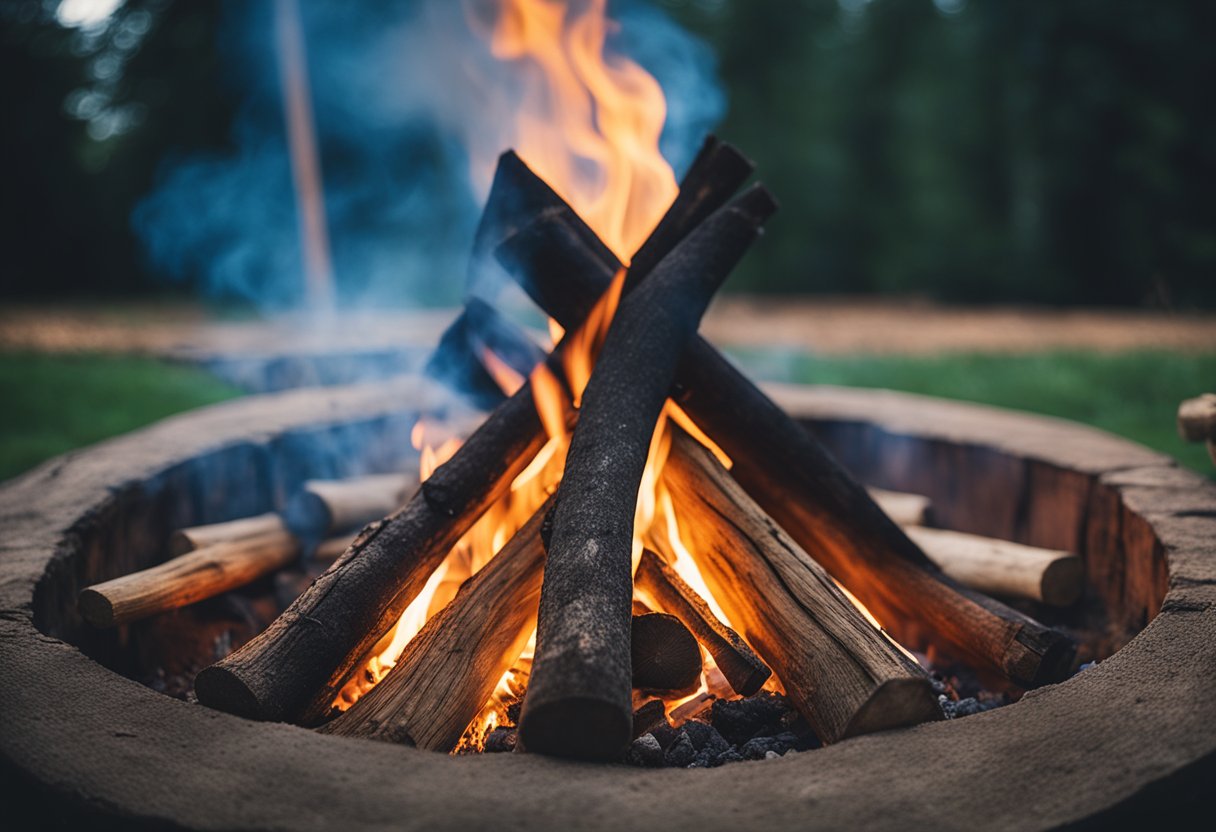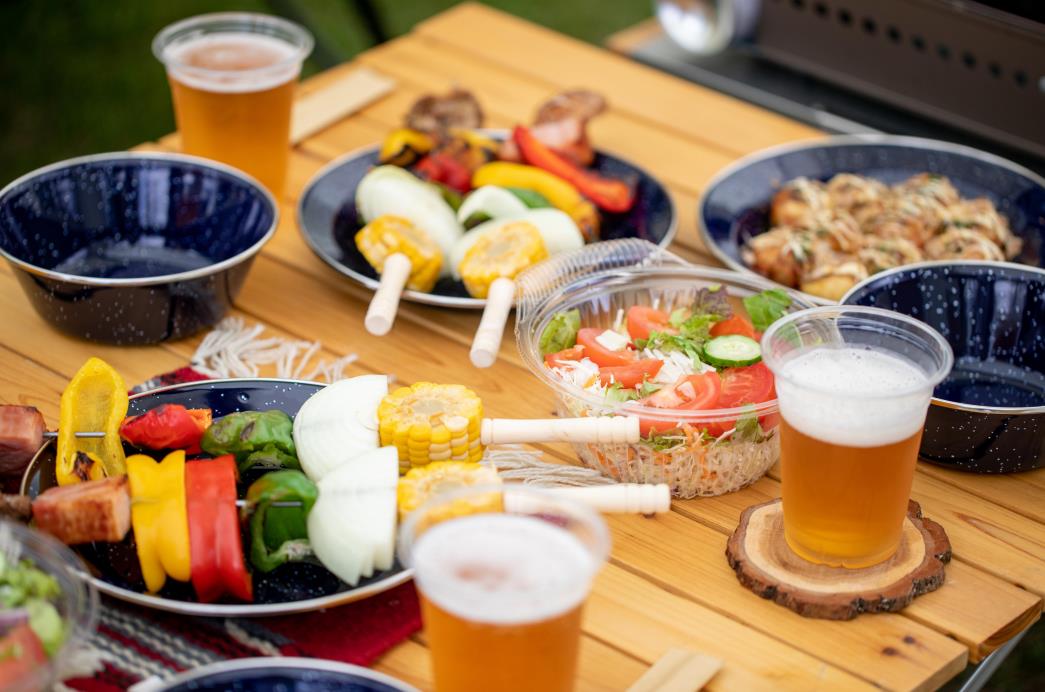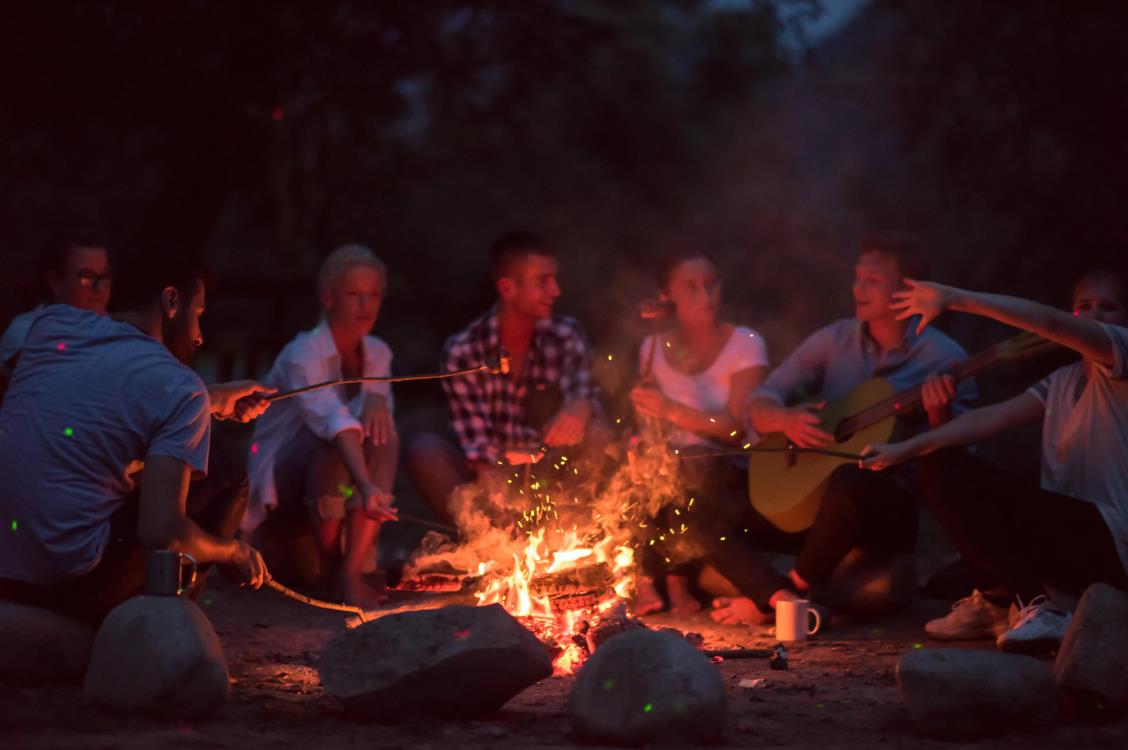A cozy campfire can be the perfect centerpiece of a relaxing evening spent in the great outdoors. As you sit around the flickering flames, it’s natural to wonder just how hot a campfire can actually get.
Several variables influence how hot a campfire can get, including the type of wood used, weather conditions, and airflow. Generally, campfires can reach temperatures 800°F (427°C) and 1,200°F (649°C). It’s important to note that these temperatures can fluctuate depending on the aforementioned factors. In the following sections, we will delve deeper into what causes these variations and how you can safely manage your campfire experience.
By recognizing the factors that affect your campfire’s temperature, you can make informed decisions when it comes to choosing your firewood, positioning your fire, and policing its overall safety. As a result, you’ll be better equipped for creating a warm, enjoyable atmosphere while also minimizing any potential hazards.
Table of contents
The basics of a campfire
A campfire is a managed fire used for warmth, cooking, and entertainment. It consists of two main parts: the core and the plume. When you build a campfire, there are a few basic principles to keep in mind.
- First, you should start with dry materials, such as wood, tinder, and kindling. Tinder and kindling are crucial in the initial stages of the fire building process, as they ignite easily and help establish the fire. Examples of typical tinder materials include dry leaves, grass, or small twigs, while kindling usually refers to small, dry branches or wood chips.
- Once you have collected tinder and kindling, arranging these materials in a specific pattern can significantly improve the fire structure. Common structures are the teepee, log cabin, or lean-to. Each arrangement has its benefits and preferred use, depending on the type and size of your campfire.
- A critical factor for maintaining any successful fire is oxygen. To ensure proper airflow in your campfire, make sure there is space between fuel. As you build your fire, continue to pay attention to the oxygen-fuel balance, which plays a crucial role in sustaining the flames.
- The heat of the campfire mostly originates from the core. As wood and other materials burn, they release heat and various gases, contributing to the overall temperature of the fire. The plume, which is the visible part of the fire showing flames, is primarily responsible for spreading heat and light.
Remember, safety should always be a priority when building and managing a campfire. Clear the area around your fire, avoid leaving it unattended, and always ensure it is fully extinguished once you are done.
Campfire fuel and oxygen
Wood
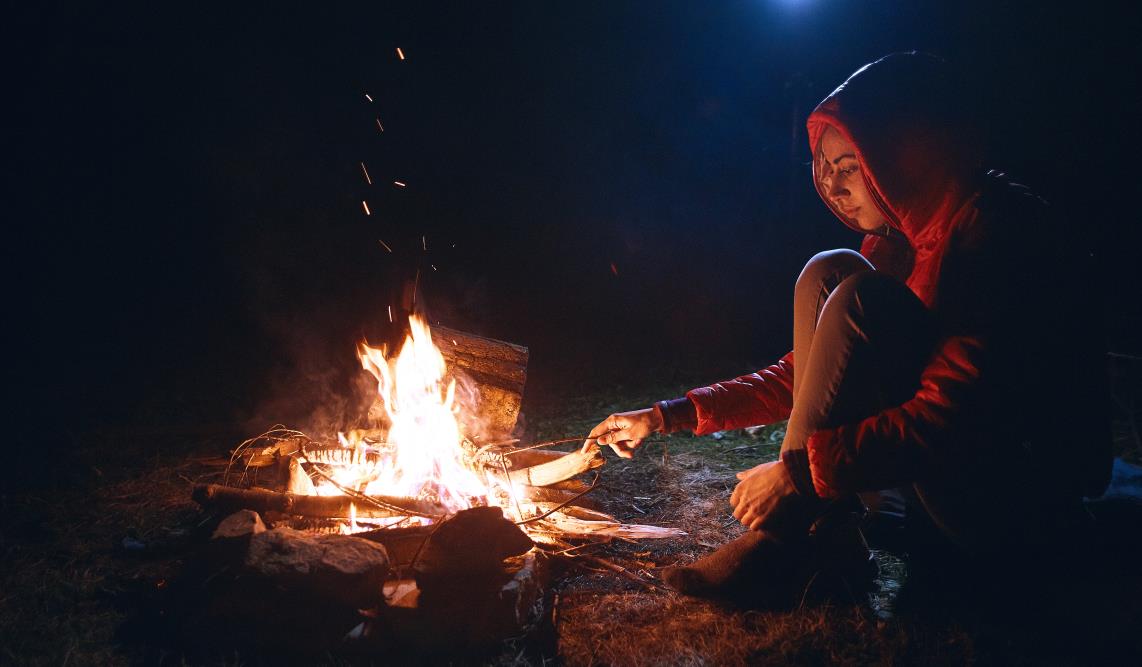
When choosing wood for your campfire, it’s essential to differentiate between hardwood and softwood. Hardwoods like oak and hickory are denser and have a higher heat content than softwoods such as cedar and pine. Therefore, hardwoods provide stronger and longer-lasting fires with steady heat, while softwoods burn quicker and at a lower heat.
Here are some different types of woods and their respective heat output:
- Oak: As a hardwood, oak produces long-lasting, steady heat. It is a popular choice for campfires because of its high heat output and low smoke production.
- Hickory: Another hardwood, hickory burns hot and has a pleasant aroma. It is ideal for campfires that require a high heat output.
- Cedar: This softwood burns quickly and produces a moderate heat output. However, it releases more smoke, making it less suitable for enclosed campfires.
- Pine: Pine is a fast-burning softwood with a moderate heat output. Its high sap content can cause popping and crackling in the fire.
Effect of dryness and sap
The dryness and sap content also impact the heat of a campfire. Dry wood burns more efficiently and provides better heat than green wood (freshly cut wood with high moisture content). Sap content in woods, such as pine, can vary the heat output and combustion quality. High sap content can create more creosote buildup and dangerous flare-ups.
In conclusion, when building a campfire, considering the wood type and its properties can significantly affect heat output, burn duration, and overall fire performance.
Alternative fuel sources
Although traditional campfires use wood as their primary fuel source, there are other options. For example, you can use alternative fuel sources such as:
- Charcoal: This fuel type burns slower than wood and is ideal for campfires intended for cooking. Charcoal generates an even heat, making it easier to maintain a consistent temperature.
- Firestarters: Commercial firestarters are available in a variety of forms, including wax-based blocks and compressed sawdust. These products quickly ignite and help establish a fire in damp conditions or when the wood isn’t ideal.
- Recycled materials: Items like paper, cardboard, and small twigs can also serve as fuel sources. Before using these materials, consider the environmental impact and ensure they don’t release toxic fumes when burned.
Regardless of which fuel type you choose, adequate oxygen is necessary for a successful campfire. Oxygen provides the energy required to sustain the fire and enables combustion reactions. Here are some tips to ensure proper oxygen flow in your campfire:
- Select an open campfire location: Ensure the area is free from obstacles such as tree branches or overhangs that may hinder air circulation.
- Structure your fire: Building a structure with ample airflow, such as a teepee or log cabin design, helps oxygen reach the fuel and maintain the fire.
- Monitor the wind: Be sure to set up your campfire perpendicularly to the wind direction. This will enable the fire to receive a steady supply of oxygen while preventing it from spreading to unintended areas.
- Use a fire ring: Placing a ring of rocks or using a portable metal fire ring can keep your campfire contained and improve its airflow.
Cooking on a campfire
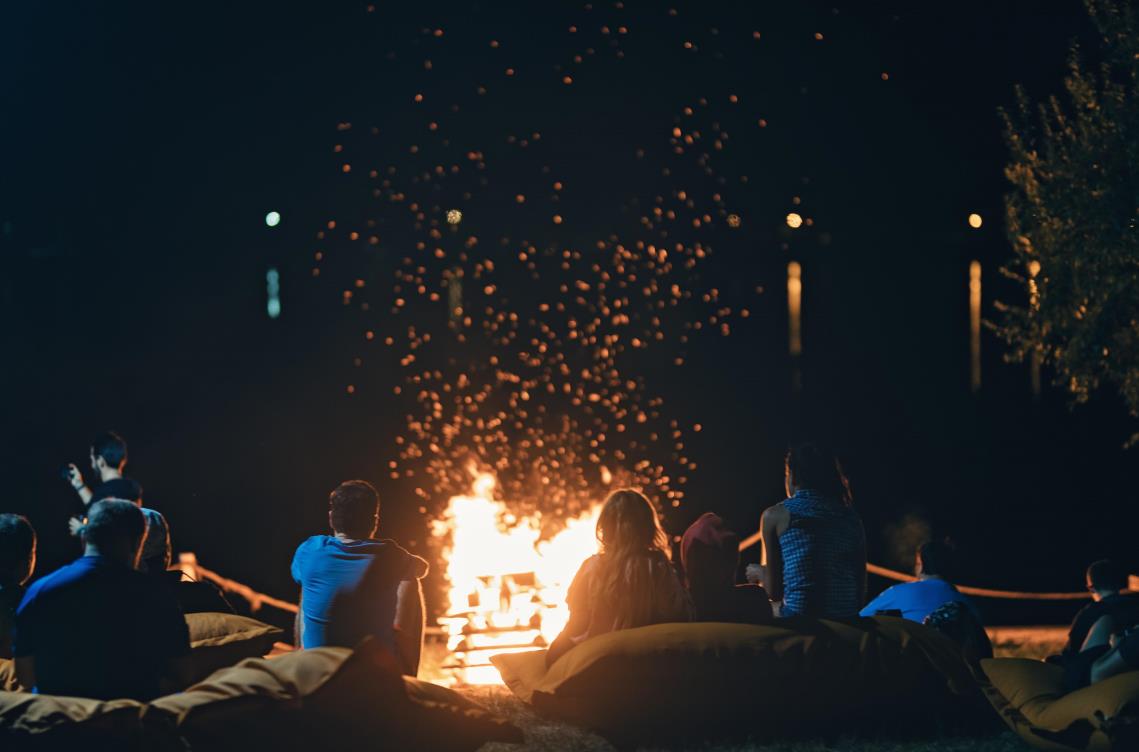
Ideal cooking temperature
If you plan on cooking over campfire, maintaining the ideal temperature is essential for perfect results. You should aim for a temperature of around 350°F (175°C), which is suitable for most types of food, including meats and vegetables. To achieve this heat, let your campfire burn down until you have a bed of hot coals that provide stable, consistent heat. Use a campfire grate or a tripod for supporting your cookware above the coals.
Cookware for campfires
Selecting the right cookware for your campfire cooking experience is crucial. Here are some popular options:
- Cast Iron: This material is highly recommended for campfire cooking due to its heat retention and even cooking. Skillets, griddles, and Dutch ovens made of cast iron are popular choices. Keep in mind that cast iron cookware is heavy and requires proper seasoning to maintain a non-stick surface.
- Stainless Steel: This lightweight, corrosion-resistant metal is another suitable option, though it may not provide the same even heat distribution as cast iron. Stainless steel pots and pans are ideal for boiling water and cooking soups or stews.
- Aluminum: Though not as durable as cast iron or stainless steel, aluminum cookware is lightweight and heats up quickly, making it suitable for some types of cooking. However, be cautious of using thin aluminum cookware, as it may warp under high heat.
While copper and other metals are available, their melting points and thermal properties may not be suitable for campfire cooking. Always use cookware that is specifically labeled for campfire or outdoor use. Additionally, invest in durable, heat-resistant cooking utensils for your campfire cooking needs, such as long-handled tongs, spatulas, and fire-resistant oven mitts or gloves.
Best Camp Cooking Equipment
Get 11% off and free shipping – limited time only!
Campfire safety measures
Fire pit and fire ring usage
To ensure your safety when using a fire pit or fire ring, always start by selecting a level ground surface away from any flammable materials. Clear the surrounding area of any debris or dry leaves. Before lighting the fire, ensure you have a bucket filled with water, sand or dirt, and a shovel to put out the fire quickly in case of an emergency.
Handling wind and airflow
Wind and airflow can be a critical factor in maintaining a controlled and safe campfire. To minimize the risk of the fire spread, try to create a windbreak using rocks, logs, or camping gear. Keep a safe distance from the fire and monitor the wind direction to ensure that it’s not blowing toward your tent or any flammable items. Additionally, never leave your campfire unattended, especially on windy days.
Hazard of dangerous animals and hanging branches
It is essential to be aware of any dangerous animals or hanging branches around your campfire site. Check for signs of animal activity, and avoid setting up a camp near known animal trails or feeding areas. Hanging branches can be a fire hazard, so trim or avoid setting up a fire underneath such branches.
When taking these safety precautions, you’ll increase your chances of having an enjoyable and secure campfire experience while reducing risks associated to fire pits, fire rings, wind and airflow, and potential hazards from dangerous animals.
Understanding flame colors
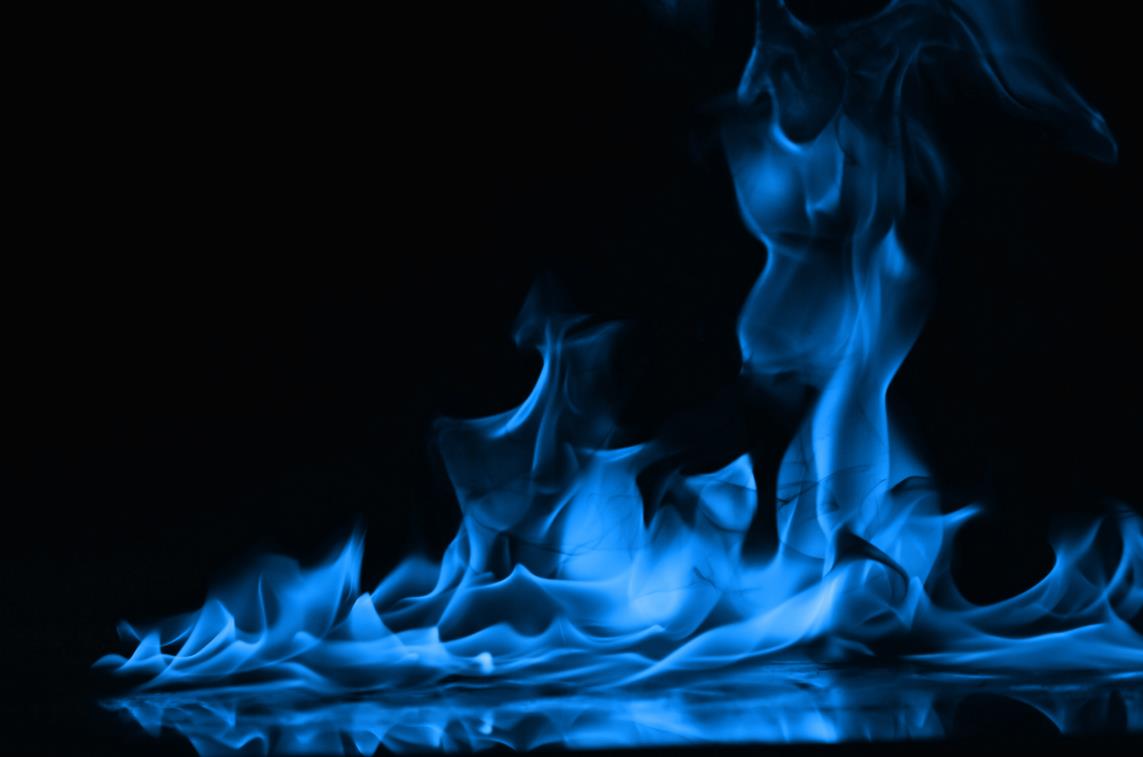
During a campfire, you might notice the various colors of the flames. These colors are influenced by the temperature and chemical composition of the burning material. Remember, the primary colors in campfire flames are red, yellow, and blue.
- Red flames result from lower temperatures, around 1,112°F (600°C). They occur when there is incomplete combustion, leading to greater amounts of unburned particles. The soot or carbon particles in the cooler regions of the flame, combined with the radiative properties of these particles, produce the red color.
- Yellow flames are a bit hotter than red flames, typically occurring at temperatures around 2,012°F (1,100°C). While still involving incomplete combustion, the yellow flame has fewer unburned particles than red flames, resulting in a brighter color. You can often observe yellow flames when burning substances like wood or paper, which contain trace amounts of sodium, contributing to the yellow hue.
- Blue flames represent the hottest flames, reaching temperatures of about 2,912°F (1,600°C) or more. These flames are produced via complete combustion, which implies that there is an adequate supply of oxygen, allowing for more efficient burning. When you see blue flames, it indicates that the fuel source, such as gas or propane, possesses chemical bonds that release significant energy when broken.
Wrapping up
In summary, a campfire’s heat can reach temperatures between 800°F (427°C) and 1,200°F (649°C). While they provide warmth and ambiance, it’s crucial to prioritize safety. Keep a safe distance, use proper materials, and have tools to control the fire. Never leave it unattended and always extinguish it completely when done. By respecting the heat and following safety precautions, you can enjoy the campfire experience to the fullest while staying safe in the great outdoors.
More camping guides and recipes can be found on our blog site, do check them out for better camping experience in the future!







